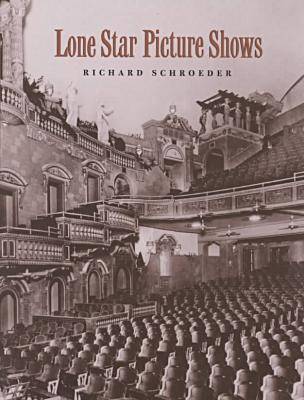Sam Rayburn Series on Rural Life
1 total work
In a span of sixty-three years, from 1897 to 1960, Texans witnessed the rise and fall of the silent film, the introduction of "talkies," the drive-in, and 3-D. They saw how World War II affected the movies and watched movies transform again when the advent of television brought a new kind of competition. They even had their own movie production centers in the early years. El Paso and San Antonio vied in the race to become the nation's movie capital.
In Lone Star Picture Show Richard Schroeder does more than examine the evolution of the movie industry in Texas - he re-creates the environment of the darkened movie theater. Drawing on interviews with theater managers, cashiers, projectionists, and general workers, Schroeder captures the theater-going experience of the past and uses their recollections to describe life in the movie business throughout the century. Schroder also considers the racial and ethnic makeup of Texas and the movie houses of the Hispanic and African-American communities.
The fascinating and well-written narrative offers a lively glimpse into the movie palaces of the past. Those who would like to remember the days when a nickel bought a Saturday afternoon of entertainment in a palatial, darkened theater will find Lone Star Picture Shows a charming and informative slice of Texana.
